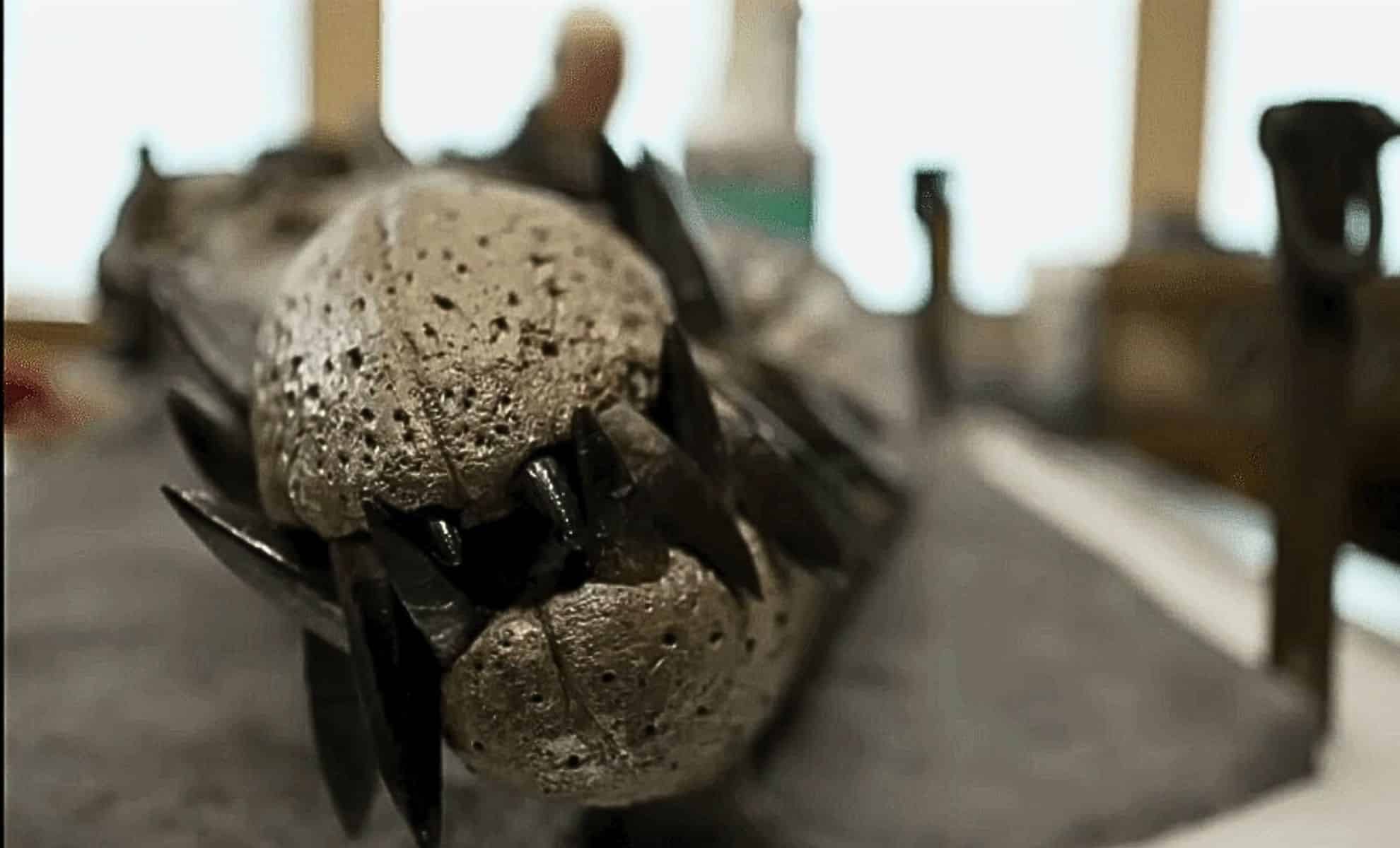
A remarkable pliosaur skull has been unearthed within the cliffs close to Kimmeridge Bay, Dorset, leaving paleontologists in awe and igniting fresh discussions on the most formidable predators of the Jurassic period.
This ancient fossil, which showcases a bite force exceeding that of a T. rex, belonged to a marine reptile that dominated the oceans approximately 145 million years ago. With its sharp, serrated teeth and powerful jaws, this prehistoric hunter is now being likened to some of the most terrifying animals to ever exist.
An Astonishing Find Along the Dorset Cliffs
The skull was discovered 12 meters (39 feet) high on a cliff along the Jurassic Coast, a globally recognized hotspot for fossils. The recovery was spearheaded by Chris Moore and Steve Etches, two knowledgeable specialists devoted to uncovering evidence of ancient life.
While pliosaur fossils have been previously identified, this particular specimen exhibits distinctive traits never recorded in any existing species. The presence of a prominent cranial crest and a long jaw extending beyond the eye socket has captured the attention of researchers, indicating it may represent a previously unknown variety of pliosaur.


Image credit: BBC Studios
A Predator Mightier Than T. Rex
Pliosaurs were the top predators of the Jurassic seas, dominating their aquatic environments with massive, muscular jaws capable of crushing their prey with a devastating force. Research into the newly uncovered fossil suggests its bite was even more powerful than that of a Tyrannosaurus rex.
Famed natural historian David Attenborough, who monitored the discovery’s progress, posed the intriguing question: Pliosaur versus T. rex—who would come out on top? Experts concur that the answer is unmistakable: the pliosaur was the unrivaled monarch of Jurassic carnivores.
“It was the most fearsome creature in the oceans,” stated Dr. Andre Rowe, an American researcher involved in the analysis.


Image credit: BBC Studios
An Uncommon Find—A Skull of Exceptional Quality
Fossils of this considerable size and condition are exceedingly rare. The exceptional preservation of the skull, appearing nearly as it would have when alive, marks this as a once-in-a-lifetime discovery.
On examining the fossil, Attenborough expressed his amazement:
“The scale of this skull is staggering, and its intricate details are absolutely breathtaking.”
The fossil also displays sensory pits and a potential parietal eye, an adaptation that may have aided the pliosaur in navigating its environment, similar to how contemporary crocodiles detect movement in water.


Image credit: BBC Studios
A Discovery Documented for All
The entire excavation process was captured by BBC, culminating in a documentary narrated by David Attenborough. This special aired on BBC One and iPlayer, providing audiences with an exclusive glimpse into the fossil’s discovery, recovery, and ongoing investigations to determine if this represents a new species.
With the skull now safely displayed at The Etches Collection, further investigations will reveal more about this prehistoric giant that once ruled the Jurassic waters. If verified as a distinct species, this remarkable find could reshape our understanding of the ocean’s most lethal predators throughout history.
This article was published in BBC. Note: This document has been modified for brevity and content accuracy. For additional details, please refer to the original source.
What are your thoughts? We invite you to share your insights in the comments
Did you enjoy this article? Subscribe to our newsletter for captivating stories, exclusive updates, and the latest news.









